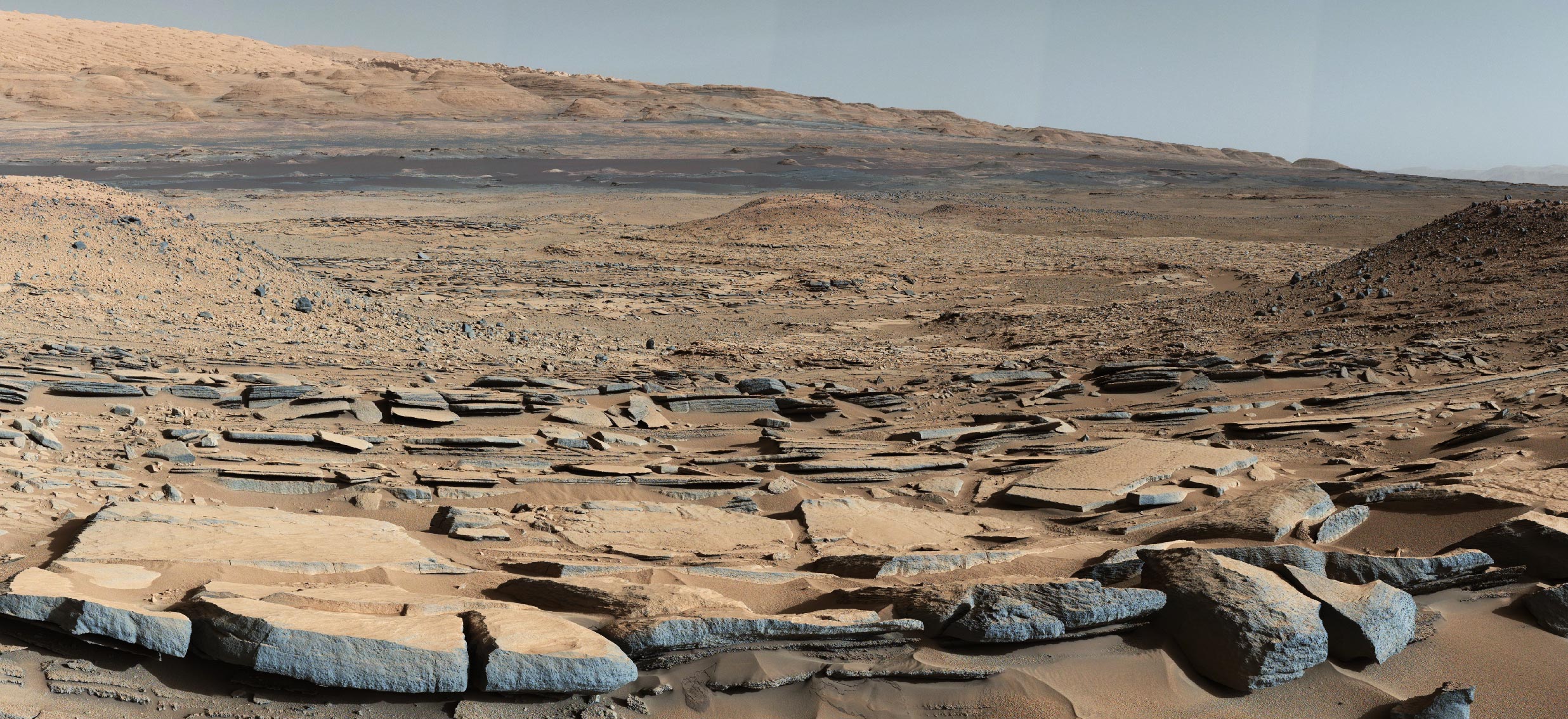
A view from the “Kimberley” formation on Mars viewed by NASA’s Curiosity Rover. The layers in the foreground dive toward the base of Mount Sharp, indicating the flow of water to a basin that existed before forming most of the mountain. Credit: NASA / JPL-Caltech / MSSS
The Perseverance Rover has just landed March. Meanwhile, its forerunner Curiosity continues to explore the base of Mount Sharp (officially Aeolis Mons), a mountain a few kilometers high in the middle of the Gale crater.
Using the telescope on the ChemCam instrument to make detailed observations of the steep terrain of Mount Sharp at a distance, a French-American team led by William Rapin, CNRS researcher at the Institut de Recherche en Astrophysique and Planetology (CNRS / University of Toulouse III / CNES)[1], discovered that the Martian climate recorded there alternated between dry and wetter periods, before drying out completely about 3 billion years ago.

View of hills on the slopes of Mount Sharp, with the different types of terrain that will soon be explored by the Curiosity Rover, and the ancient environments in which they formed, according to the sedimentary structures observed in ChemCam’s telescope images (mosaics A and B) word. ). Credit: © NASA / JPL-Caltech / MSSS / CNES / CNRS / LANL / IRAP / IAS / LPGN
Spacecraft in orbit around Mars have already given clues about the mineral composition of the slopes of Mount Sharp. But now ChemCam has successfully made detailed observations of the sedimentary beds from the planet’s surface and revealed the conditions under which they formed. The types of bed change radically through the observed terrain which is a few hundred meters thick.
Lying above the deposited clays that form the base of Mount Sharp, wide, long, cross-bed structures are a sign of the migration of windy dunes during a long, dry climate episode. Still, thin, alternating brittle and resistant beds are typical of river floodplains, indicating the return of wetter conditions. The climate of Mars, therefore, was likely to undergo large-scale fluctuations between dry conditions and river and lake environments until the generally dry conditions observed today took hold.
During its extensive mission, Curiosity planned to climb the foothills of Mount Sharp and drill into the various beds. It will test this model, typify in more detail how the ancient climate evolved and possibly understand the origins of these great fluctuations.
Reference: April 8, 2021, Geology.
DOI: 10.1130 / G48519.1
This work was supported by CNES, the French Space Agency, to oversee the construction of the ChemCam instrument and operate it in conjunction with Los Alamos National Laboratory (New Mexico, USA).
Note:
[1] The other team members work at the Laboratory of Lyon Geology: Terre, Planètes, Environnement (CNRS / ENS de Lyon / Lyon University 1) and the Laboratoire de Planétologie et Geodynamique (CNRS / Université de Nantes / Université d’Angers) in France. ; at the UC Santa Cruz, U.S. Geological Survey, California Institute of Technoloy and the Los Alamos National Laboratory in the United States.
